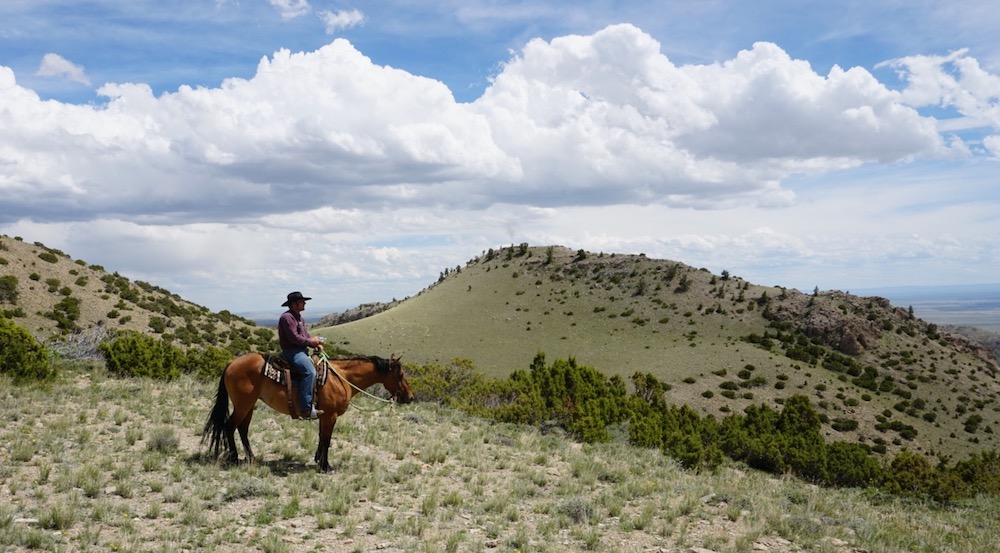There isn’t much traffic on Birdseye Pass Road just outside Shoshoni in north-central Wyoming, despite the fact that it carves around the southern and eastern borders of the Copper Mountain Wilderness Study Area — a place that the U.S. Bureau of Land Management proclaims has “outstanding” potential for “primitive and unconfined recreation.”
Traffic will pick up in September when hunters begin scouting the area for deer and elk. Meantime, there’s always the occasional out-of-town vehicle that’ll stray from county road to private. These drivers often avoid stopping to visit with a local rancher who pulls over for a quick hello, and to maybe offer some advice.
[learn_more caption=”What are Wilderness Study Areas?”] Wilderness Study Areas originated from the Federal Lands Policy and Management Act of 1976 which required the identification of federal lands with “wilderness characteristics.” As such, lands are either recommended for wilderness or a host of other potential designations. Only Congress has the authority to make the designation based on the recommendations of the Bureau of Land Management and the U.S. Forest Service. In Wyoming, there are 42 BLM WSAs. (Source: Wyoming Public Lands Initiative) [/learn_more]
“We call ‘em Lookie-Lous,” Garrett Herbst says as he grinds pickup and loaded horse trailer up this road toward the family’s old homestead. They’re mostly harmless and well-intentioned, the 31-year-old fourth generation rancher adds. There’s a common perception that ranchers are unapproachable, and maybe even downright grouchy toward the average person looking to recreate among the patchwork of public and private land in Wyoming.
Herbst says that’s a perception ranchers need to try to change, for their own survival.
“We gotta take just a little time to visit, and help people know where they can be and do it right. That’s the type of thing we need to encourage, or eventually — ranchers are kind of a dying breed as it is — people are going to make it harder for ranchers if we don’t start helping them enjoy what’s around us.”
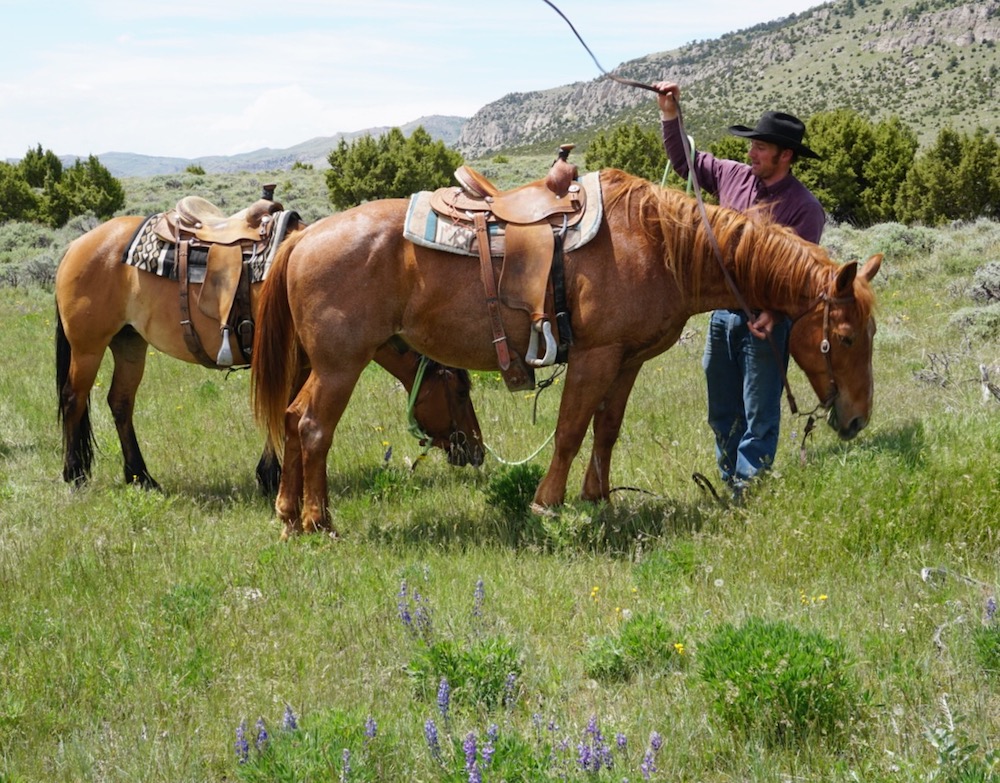
The Herbst family, and many ranchers like them, depend on grazing allotments on public lands. The Herbsts, for example, have grazed cattle here every summer for 100 years. Ranchers know these public landscapes better than most, yet Garrett Herbst worries they risk alienating themselves from other public land users when it comes to land management planning for the future.
Those risks are at play right now for the Copper Mountain Wilderness Study Area and 42 other WSAs in Wyoming currently under consideration for permanent land management changes. For the past two years a handful of counties have taken part in the Wyoming Public Lands Initiative, an effort to find broad-based consensus on the future management of WSAs as the basis for congressional legislation to move all or some of the WSAs in Wyoming from a temporary status to a mix of wilderness and other management priorities.
[learn_more caption=”What is the Wyoming Public Lands Initiative?”] The Wyoming Public Lands Initiative is a voluntary, collaborative process led by counties regarding the future management of Wilderness Study Areas in the state. The goal is to find local stakeholder consensus for how each Wilderness Study Area is managed, and to send those recommendations to Congress for potential new legislation guiding the permanent management of the WSAs. (Source: Wyoming Public Lands Initiative)[/learn_more]
Existing grazing allotments in the WSAs — such as the Herbsts’ in the northern portion of Copper Mountain — are grandfathered in the existing plans, and won’t be revoked. But a wide range of new uses are under consideration, including off-road vehicle use and new motorized vehicle trail systems.
Rock crawlers in a roadless area?
There’s no water to fish here, but a scramble to any hilltop provides stunning views of a desert-like plains to the south, Boysen Reservoir and the Absaroka Range to the west.
Copper Mountain offers a wealth of geologic and cultural resources, and challenging terrain for hikers and backpackers. There are rockfaces to climb and deep gullies rumored to hide ancient cedars. Garrett complains there’s too many mountain lions and rattlesnakes to his liking in this dry sagebrush- and juniper-covered landscape. But it provides critical refuge for the deer and elk that move into the northern and eastern parts of Copper Mountain to survive especially harsh winters, earning a portion of the WSA critical winter range habitat protections.
It’s all of these qualities, after all, that earned Copper Mountain the designation of Wilderness Study Area decades ago. This is a place that is remarkably untouched and wild. There are no roads. Anyone is free to come here and enjoy a sense of solitude — by foot or by hoof. It’s the landscape people think of when they imagine Wyoming. But the Herbsts fear these qualities may one day be lost.
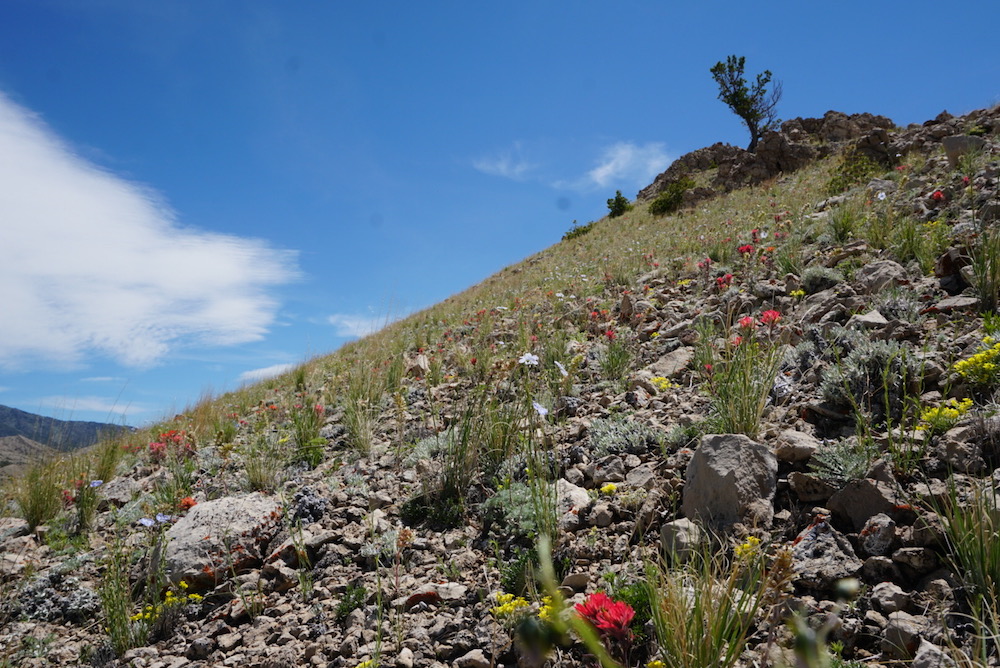
So far, the Fremont County Public Lands Committee still implicitly includes the “bottom-third” portion of the Copper Mountain WSA — just 2,000 roadless acres among 2.1 million BLM acres across the larger north-central portion of the state — in its recommendation for a motorized use study. Garrett, his father Tom Herbst, and many other locals worry that recommending such a study may be interpreted as a mandate to accommodate off-road vehicles — ATVs and even “rock crawlers” specifically designed to maw and mount rocky crags and other rugged but sensitive terrain.
While riding horseback through the “bottom-third,” Tom Herbst noted that the reason there are no roads here is because the terrain is too hilly and the soils are too delicate. A track carved by motorized wheels — even a groomed trail — would cause erosion, likely leading to another route that encourages even more erosion.
The Herbsts’ grazing allotment is situated on the northern end of the Copper Mountain WSA, which comes with the WSA-wide restriction of no motorized use. For four generations, they’ve packed in salt for wintering horses and summer cattle, and they’ve packed in materials to maintain fences and to coax spare mountain spring watering holes. That’s how it’s been done for generations — even before the WSA guidelines were established decades ago.
Opening the area to off-road vehicles would damage every quality that earned Copper Mountain its wilderness study designation in the first place, the Herbsts say. They want the Copper Mountain WSA to be excluded from any recommendation for an ORV suitability study, and they’ve gathered more than 200 signatures from others — mostly locals — who agree.
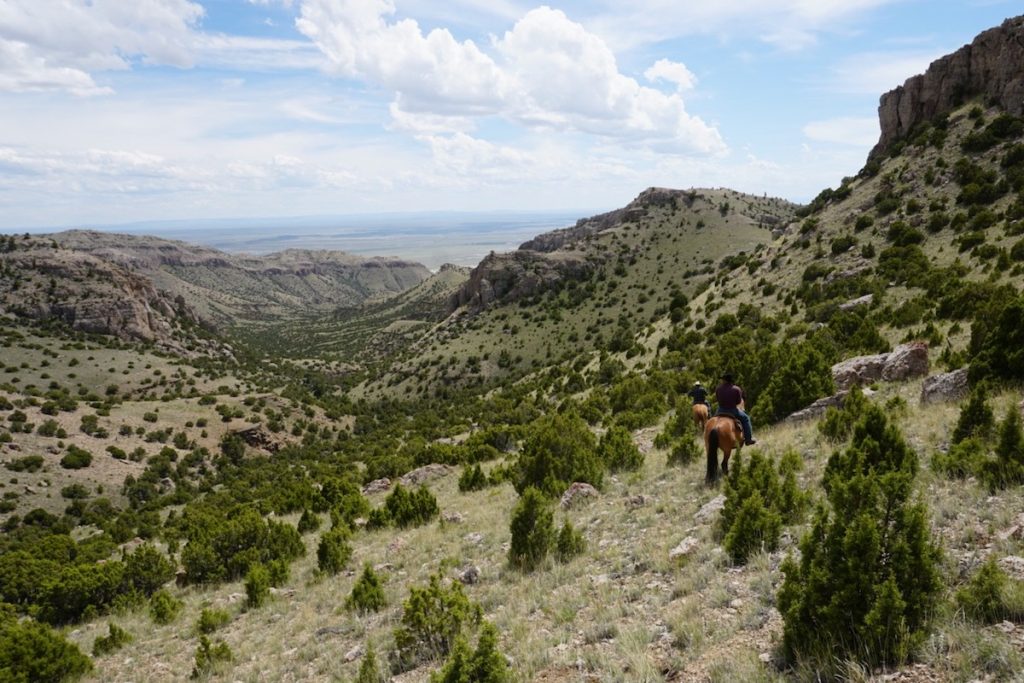
“It’s not good for hunters, not good for hikers, not good for wildlife. It’s only good for the ORV user,” Tom Herbst said. “Here’s the other thing for ranchers: conservation is critical in an arid area like this. If we don’t kind of conserve it, we don’t have grazing. We’ve got to take care of it.”
As Garrett and Tom find allies among the ranching community and initiate conversations to elevate suitable recreation opportunities at Copper Mountain — such as climbing, birding, and hiking — they feel the Fremont County advisory committee hasn’t taken their wishes, concerns, and local knowledge into account.
Are public lands committees listening to the public?
The Wyoming Public Lands Initiative set out to resolve the temporary status of WSAs — in limbo for nearly three decades. Each county with a WSA was encouraged but not required to participate. The initiative recognized that a consensus set of recommendations created by a broad coalition of stakeholders stands the best chance of support for congressional legislation.
WPLI’s charter states that “County WPLI Advisory Committees will be expected to encompass a broad cross-section of public lands stakeholders.” The initiative’s Principles and Guidelines state that Public Lands Committees “allow for public comment opportunities at all of the committee’s meetings” — a charge that participating committees have honored; most provided multiple opportunities, and even online comment submissions.
But the guidelines do not say how public comments are to be considered by the committees, or integrated into the committees’ final recommendations.
Neil Long is a climber who lives in Casper in neighboring Natrona County. He’s among many local climbers who frequently scale granite walls inside the four WSAs that comprise the Sweetwater Rocks complex far south of Copper Mountain. Neil and many of his fellow climbers have read through committee meeting minutes and reached out to members of the Fremont County Public Lands Committee to share their input. Neil shares the same concern as the Copper Mountain ranchers — that the committee appears to listen, but then doesn’t seem to incorporate broad public agreement into its decisions.
“I reached out and got responses ranging from no response and neutral response, and that public opinion isn’t going to persuade some [committee] members,” Neil said.
Like the Herbsts, Todd Humphreys works a grazing allotment in the Copper Mountain WSA, carrying on a 90 year family tradition. In that time there have been dustups about land use, he said, but things have worked nicely the past few decades among local ranchers, the Bureau of Land Management, and the public under the WSA designation. Humphreys says he shares the view that ranchers need to be partners with land managers and the general public that wants to enjoy the wild, roadless area.
“We have to learn how to share this,” Humphreys said. “Other people need to enjoy this too — the people who appreciate it.”
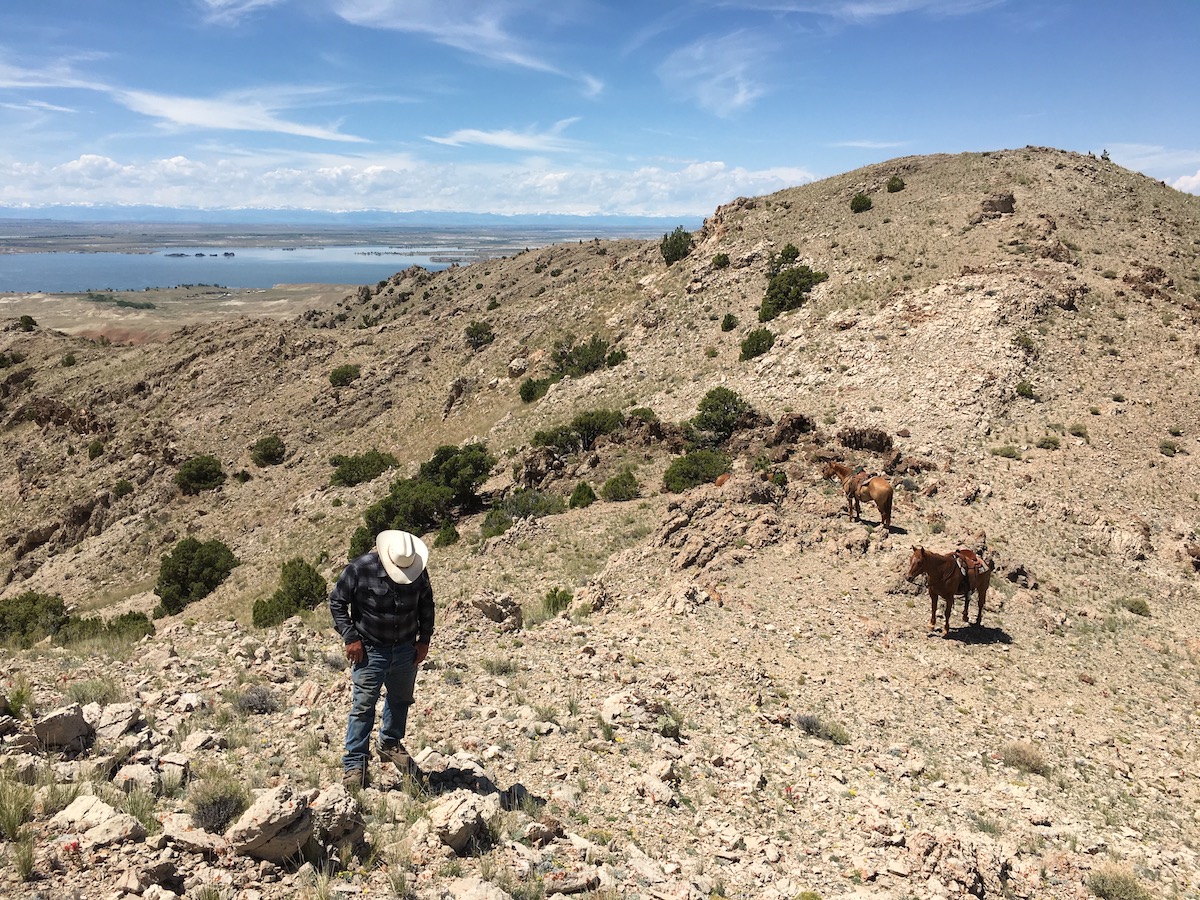
Humphreys acknowledged public land grazers sometimes butt heads with the BLM in some areas, but it’s working out on Copper Mountain. “The Wilderness Study Area is no problem with us,” he said. “Even if it’s [permanently] made a wilderness area, we can work with that, and we can work with the BLM. We just don’t want motorized vehicles in there with trails and trash.”
Humphreys attended several Fremont County Public Lands Initiative committee meetings, wrote comments, and helped organize with other locals, and said he appreciates the task and the manner in which the committee has worked.
“But when it came down to recommendations for this area, it seems like they protected other [WSAs in Fremont and Natrona counties] but backed off of Copper Mountain. I think there are some interests there who are not concerned with Copper Mountain, and they blocked everything we tried to conserve.”
Two committee members refused to support the draft recommendation, in part because of concerns over the potential for motorized access to areas like Copper Mountain. But it’s unclear whether the Copper Mountain ranchers will be heard as recommendations move from committee to the county commission and perhaps to Congress.
“All 325 million people in the United States have the right to be on public ground. Now it’s just a matter of how are we going to use certain parts of it?” Garrett Herbst said. “Because certain places may be suitable for certain activities. Other places — especially like we feel about this — there’s absolutely no motorized trails. Why destroy this little piece?”
Over the next few months, committees around Wyoming will seek public input as they work to finalize sets of recommendations for this and other public landscapes. You can follow the progress here at wyomingoutdoorcouncil.org, and on our Facebook page.
NOTE: This is the first of a 3-part series about the Wyoming Public Lands Initiative, now in its final stages of approving recommendations to send to Congress.

